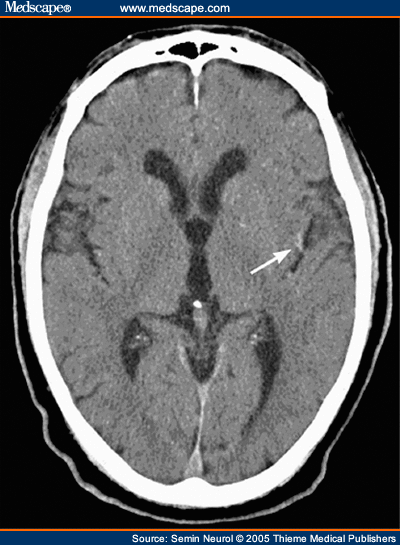?ARE YOU BOLD WITH SYLVIAN DOT SIGN AND DELTA SIGN
Q1.BOLD(blood
oxygen dependent level) effect is used in
a.MR perfusion imaging
b.MR spectroscopy
c.PET
d.functional
MRI
Q2.Sylvian
dot sign on CT is noted in
a.cerebral
ischemia
b.intracranial haemorrhage
c.cerebral vein thrombosis
d.oligodendroglioma
Q3.Delta
sign is noted in
a.cerebral arterial ischemia
b.cerebral
venous thrombosis
c.meningioma
d.optic glioma
ANS:1---d===functional MRI
2---a===cerebral ischemia
3---b===cerebral venous thrombosis
BOLD EFFECT
- Functional MRI techniques is used to study cortical activation.
- The most commonly applied technique is measurement of a tiny increase in signal intensity on T2*-weighted acquisitions in the relevant cortex during neuronal activation.
- This occurs as a result of the magnetic susceptibility effects of oxyhaemoglobin.
- Oxyhaemoglobin is diamagnetic while deoxyhaemoglobin is paramagnetic.
- During cortical activation there is an increase in rCBF and thus an increase in oxygen delivery to the activated brain, which exceeds the local oxygen metabolic requirement. There is, therefore, a net increase in oxyhaemoglobin concentration in the venules and veins in the vicinity of the activated brain, which results in a tiny increase in MR signal, the so called blood oxygenation level dependent or BOLD effect.
- The magnitude of this MR signal change is field dependent, being greater at higher field strengths.
- Although fMRI is being increasingly used for brain mapping, the technique has limited clinical applications and is used primarily for the identification of eloquent cortex, particularly the motor strip, prior to surgery in patients with structural lesions and arteriovenous malformations
SYLVIAN DOT SIGN

- A dense artery is the earliest detectable change on CT in cerebral ischemia
- Dense artery is caused by fresh thrombus occluding the vessel.
- Thrombus in MCA artery in sylvian fissure is known as sylvian dot sign.
DELTA SIGN
- Causes of cerebral venous thrombosis include trauma, infection (particularly subdural empyema) and hypercoagulability disorders including those due to oral contraceptives.
- Venous infarcts do not conform to arterial territories and are often haemorrhagic and multifocal.
- The superior sagittal sinus is most commonly involved, which can lead to bilateral parasagittal infarcts.
- On unenhanced CT acute thrombosis will cause a venous sinus to appear expanded and hyperdense. IV contrast medium causes more intense enhancement of the walls of the sinuses than of their contents, the so-called DELTA sign’
REF:
Adam: Grainger & Allison's Diagnostic Radiology, 5th
ed.
No comments:
Post a Comment